Review: LG GS505 Sentio
Jul 2, 2010, 1:30 PM by Eric M. Zeman
LG's Sentio brings touch power to T-Mobile in an affordable package. It covers the basics, but misses the mark in a few places. It might suffice for younger users, but advanced users will find it limiting.
Form
Is It Your Type?
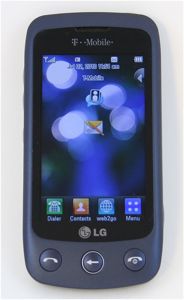
The LG Sentio is a middle-of-the-road feature phone for T-Mobile. Similar to the recently-reviewed Vu Plus, it has a touch display and uses the standard user interface developed by LG for touch devices. If you insist on having a touch device, the Sentio does OK, but there are other non-smartphone devices that do better. It's one device that earns its $70 price point.
Body
The LG Sentio has a nearly perfect size and shape. It is small, thin, and light, and rounded edges make it very comfortable to hold and use. The materials are all plastic, and are coated in a soft-touch finish. The Sentio doesn't come off feeling cheap. It feels well put together and will easily slip into a pocket and disappear.
The Sentio's front face is mostly dominated by the 3-inch display. There are three buttons below it: Send, Back, and End/Power. All three have a pronounced shape and are placed far enough apart that it is easy to find and use them. Travel and feedback of these controls is perfect, offering a nice solid "click."
The volume rocker is placed on the left edge of the Sentio. It has two little humps that make finding it a cinch. There is a task button below it, which lets the Sentio switch between applications. It's a little small, and harder to find. These two buttons both had good travel and feedback. On the bottom of the left edge, LG has placed the microUSB port for charging and accessories. There is no headset jack to speak of, so Bluetooth is your only headset option. That's a disappointment.
There is a dedicated camera button on the right edge of the Sentio. It is small, and travel and feedback are minimal. It's a one-stage button, as the Sentio has a fixed-focus camera. The only other control is a lock key on the top of the Sentio. Pressing it quickly puts the display to sleep. Pressing it twice quickly will wake it up and unlock it. Pressing any other button on the phone when it is asleep will wake up the display and show the lock screen. It also is small and has minimal travel and feedback.
The microSD port is located under the battery cover, but thankfully not under the battery itself. That means hot-swapping is OK.
It may be small and somewhat boring to look at, but everything about the Sentio works as it is supposed to, and nothing gets in the way of using the device.
The Three S's
Screen
The Sentio has a 3-inch display measuring 240 by 400 pixels. For me, this is too small and too few pixels. It leaves little room on the screen for icons, applications, and text. I won't say that things feel squished, but it is definitely tight. The resolution is such that text, icons and graphics all have rough edges and sometimes appear "out of focus" or soft. It also isn't very bright. It is readable indoors, but outside it is almost impossible to see. You have to seek out shade or a shadow to see anything on the display outside. That gets old quick. The Sentio's display works, but doesn't impress.
Signal
The Sentio performed admirably when it came to collecting T-Mobile's EDGE/3G signal. Most times I checked the status indicator, it had a full 5 bars to report. Very seldom did it dip down to 2 or 3 bars. I did, however, lose the 3G connection and fall back to T-Mobile's EDGE network in an area with questionable coverage. That only happened once, though. In my experience, the signal never played a role in the Sentio's ability to connect or receive phone calls. I didn't drop any calls when using it. Data sessions were almost universally slow, however. Despite the 3G network, web sites were slow, slow, slow to load. In side-by-side tests, almost every other 3G T-Mobile device I have on hand bested the Sentio in terms of data speeds.
Sound
Phone calls through the Sentio were muddy at best. There was lots of static, hiss, and the sound occasionally dropped out completely for a second or two. Voices in the earpiece sounded muffled and digitized. Those with whom I spoke reported similar issues on their end. This means the Sentio is not a great voice device. The good news is that the volume of the earpiece, ringers, and speakerphone is bombastically loud. You can make the Sentio loud enough to tick off someone like Eddie Van Halen.
Battery
The Sentio's battery fared pretty well. In my tests, I was easily able to eke two days out of it, with plenty of calls and messaging. Turning on the Bluetooth will steal about half a day, however, as will extended use of the music player. Used sparingly, you could conceivably get through an entire weekend without a charge, but that might be pushing it. It's best to plan on charging every other night.
Touch
As with the LG Vu Plus recently reviewed by Philip, the Sentio uses a resistive touch display. It doesn't work all that well. Once calibrated, it at least knows "where" you're pressing, although it may not always know "when" you're pressing. Its performance was inconsistent at best. It often took multiple presses to get the Sentio's display to work properly. For the more complicated flicking gestures, it failed completely. The resistive display often couldn't tell that I was swiping, and instead thought I was pressing. It would launch whatever my finger happened to touch first. This led to a lot of frustration, as I had to cancel tasks and re-navigate to whatever menu or application I was using before the touchscreen screwed up.
The poor touch execution isn't a total deal-breaker, but it really does get in the way of using the phone.
Basics
Menus
The Sentio uses the same basic user interface that LG has stuffed into its touch phones for years. There is one home screen, which users are free to populate with widgets. In the upper right corner of the screen is a little tab, similar to Samsung's TouchWIZ. Tap the tab, and a tray comes out. The tray can hold up to 9 widgets, but no more than that. The widgets can be dragged from the tray onto the home screen if you wish. Users can customize the tray a little bit, but since it holds only 9 widgets, you have to delete the ones already there to add more. It's a silly limitation.
There are also four icons at the bottom of the home screen. One is for the main menu. This main menu is similar to that seen on devices such as the LG Vu Plus. There are a series of tabs on the right side of the screen which are meant to lump applications/controls into groups. Each grouping has eight apps/controls in it. For the most part, they make sense.
The apps/controls are represented by icons in the first two layers, but once you dig down deep enough, everything switches to text menus. Sometimes these menus are longer than a single screen view, so you have to scroll to get to the items at the bottom. Enter the Sentio's scrolling problem, and you can see where I'm going. It leads to frustration.
I didn't dislike the menu system as much as Philip did for the Vu Plus, but it certainly does the Sentio no favors. Perhaps the most puzzling thing is that many of the essential controls require the press of a tiny button stuffed into the upper right corner of the screen. This button doesn't have a name, or any text on it to describe what it does. You just have to figure it out by pressing it to see what happens. Intuitive? No. It would be better if LG made this button a little bit larger, and actually clued users in to what its purpose is.
I think the bigger problem is that the Sentio is limited to just one home screen and has limited screen real estate to begin with. This means that if you want to make use of the widgets, you can only do so a few at a time. Adding just one more home screen would give the user a lot more flexibility in customizing the phone.
Calls/Contacts
Calls
There are two avenues to the phone application on the Sentio. The physical Send button opens up the log of recent calls. Next to each individual call record are two green software buttons. One initiates a phone call, the other a text message. Pressing the number itself opens up the call log details, where more information is available in addition to more controls. The same little mystery key is in the upper right corner of the screen. It lets you reach other options, such as saving the number as a new contact.
You can also press the dialer button on the Sentio's display. This does exactly what it says it will do, and shows the software dialpad. From the dialing screen, you can also start voice dialing, turn on the speakerphone before a call, or jump to the recent calls list.
Contacts
The Sentio's contact app isn't the worst I've used, but it is far from the best. When first opened, you'll see a list of contacts in the bottom two-thirds of the screen, with some tools taking up the top third of the screen. The tools let you sort between contact groups, search for contacts, or see a drop-down alphabet for quick scrolling to specific letters in the contact list.
From the main contact screen, you have the same options that you do in the call log for sending text messages or placing calls directly from that screen. Press the contact name to get at the full contact data, which includes multiple phone numbers, email addresses and so on. Extended options are available if you press the key in the upper right corner of the screen, so you can send the contact data via Bluetooth, an MMS, etc.
There's no way to sync contacts from a PC or web service but T-Mobile does offer its mobile back-up, which will store your contacts in T-Mobile's servers. If you've previously used this service, you should be able to transfer your contacts from an old device to the Sentio.
Messaging
The Sentio supports POP3 email, IM, SMS and social networking all in a limited way. Starting with SMS, at least the Sentio has the good sense to include threaded text conversations. It's not the prettiest implementation ever, but LG's threaded SMS beats the pants off industry vets such as Nokia at making the interface usable. New messages appear in text bubbles and can be scanned quickly to follow conversations from beginning to end. Picture messages are included in this threaded messaging, too.
The Sentio defaults to a 12-key layout with T9 when held in the portrait orientation, but will offer a software QWERTY when rotated onto its side. The software QWERTY is not the best I've used, but it is not the worst. Probably the one strength of resistive touch displays is that it forces you to be accurate when you type on them. The reason I mention this here is because both keyboards consume nearly the entire display, leaving only a slim space for the text to actually appear. It gets frustrating. I mean, SMS messages are only 160 characters. It would be nice to be able to see all of them at once. Forget about long emails. You can see two lines at best, and scrolling up and down through your typed message is a horror.
On the email side, the Sentio has clients for Gmail, AIM Mail, Yahoo, Hotmail and the usual suspects. Enter a username and password, and you're good to go. The email client isn't terrible, but the settings are a bit annoying to deal with, as they are accessible only after clawing through layer after layer of menus. The worst part is that I could only get it to sync 10 messages at a time. Got 30 new emails? Good luck. You're only going to see 10. That makes the email experience rather worthless.
The Sentio also supports the standard three IM networks, namely AIM, Windows Live and Yahoo. The clients are all the same, and were frustrating to use due to the maze of menus you have to activate to get signed in and messaging away.
Last, the Sentio has a mediocre social networking app on board called Social Buzz. It provides rudimentary access to Facebook and Twitter, but only status updates. You can see everything your friends are saying, and even fire off updates yourself, but advanced features such as DMs and commenting on others' Facebook posts are a no-go. At least you can see @replies in Twitter.
Extras
Music
The Sentio's music player was an exercise in frustration. There's no way to sync music directly to the Sentio that I could find. USB storage mode doesn't work. Instead I had to resort to pulling out the microSD card (my own card, because the Sentio doesn't come with one), and load music that way. Music files dropped directly into the root menu of the microSD card didn't show up in the player. Neither did music placed in a folder in the root menu. Instead, you have to figure out by trial and error that the Sentio will only see music placed in a folder labeled "Media." It's not user-friendly at all.
Once you've actually loaded music, the player fares on par with other phones in this price range and actually offers a few surprises. It offers the normal playback controls on the touch screen. You can create playlists on the go, which I like, and you can alter the equalizer, set up loops and repeat, as well as turn on a visualizer. Album art only loaded sporadically.
The biggest detraction is that the Sentio doesn't offer any easy way to listen to music privately. Due to the amped up speaker, you can easily share music with friends (and probably annoy the neighbors while you're at it), but you're limited to stereo Bluetooth headphones or a clumsy USB-to-3.5mm adapter if you want to use headphones. Neither of these is a great solution, and LG/T-Mobile was not kind enough to supply the adapter.
The music player can also be sent to the background if you want. Dialing it back up quickly, however, is not going to happen. In order to get the music to reappear (you know, in order to silence the music), you have to press the task switcher button, then choose the music player, which takes its time to re-open, and then make sure you're on the "Now Playing" screen in order to do anything.
It works, but not without fighting first.
Camera
Camera
The Sentio's camera controls are actually pretty robust. The camera launches in about 1 second after pressing the dedicated camera button. Since it doesn't use autofocus, it also takes pictures fairly quick. The entire process of shooting, saving, and getting back to the camera probably takes 3 seconds. Not the speediest ever, but still respectable. Having a dedicated camera key makes a world of difference, as I find pressing a touch screen to snap pictures a bit annoying.
After you've taken the image, you have the usual options for saving the photo, viewing your gallery, sending the photo to some online service, etc. I am actually stunned by the depth of editing features available. It goes way beyond simple crop and rotate. You can add text, a voice message, scribble on it, use filters, adjust contracts/brightness rations, add stamps, change the image size and more.
For a simple feature phone, it offers a lot of features. Many more so, in fact, than some of its high-end competitors.
Gallery
The gallery app is decent, too. It takes a few seconds to load, but once it does there are no delays or problems. The first view you get is of your images in a grid. Touch one and it starts the slide show. Swiping left to right lets you flip through your images and it was snappy about it. When you settle on an image, a quick press to the screen will turn on the controls for editing or taking other actions.
Photos/Video
Photos
Photos captured with the Sentio's 3 megapixel camera were not quite up to par with the quality of the camera software itself. The lack of autofocus hurts a little bit, and I found many images to be soft and lacking fine detail. Exposure was a mixed bag. Sometimes it got everything perfect, but other times images would be drastically under- over-exposed. Taking pictures indoors, in darker rooms in particular, is a real problem. It simply doesn't perform well, and since it lacks a flash, you're more or less out of luck in dim places. Sure, you might get a few TwitPic or Facebook-worthy shots, but they are the exception rather than the rule.
Video
The Sentio's video capabilities match those of the camera. Video is definitely not YouTube worthy, though if you absolutely have no other way to capture your kids' home run, it will come through in a pinch. There's grain all over the place, exposure is inconsistent, and nearly everything is marred by blockiness and other digital artifacts.

3GPP / MPEG-4 format (viewable with QuickTime)
Browse/Customize
Browser
The browser loaded on the Sentio would be a lot better if it were faster. I didn't have any real problems with the controls or features, but the speed was just not what I expect from a 3G phone. The default home page is T-Mobile's Web2Go portal. The portal has links to the usual content, such as ringtones, news, email, etc. You can also perform Google searches from this page, or enter a URL and browse the open web. The browser can handle some HTML, but defaults to the mobile version of every web site I visited.
There is a control bar that shows up at the bottom of the screen. It provides some tools to make browsing easier. You can have multiple windows open at a time (I loaded up to five), as well as search the active web page, refresh it, bookmark it, and get rid of the nav tools entirely. The little tiny menu key in the upper right corner offers an extensive array of options for controlling the browser's behavior. Tasks include fast switching between open windows, sending the URL as a text message, automatically subscribing to RSS fees, and so on.
Due to the touch screen's limitations, it was easy to make navigation mistakes and open links when I meant to pan around.
Customize
The Sentio comes with several different themes and a decent selection of ringtones and alerts, so most people will be happy with the choices. You can always download more for a fee. You can alter wallpapers, set up picture and ringer IDs, and adjust both the font and size of menu text. The menu and dialing fonts can be set in three different sizes, with the largest big enough for even the oldest eyes. In short, it covers the basics in terms of customization.
Extras
Bluetooth
The Sentio supports a number of Bluetooth profiles. I was easily able to pair it with both mono and stereo headphones. Sound quality through both types of headphones was hellish. In fact, I'd say it was about the worst I've heard on a phone. The amount of noise was ridiculous, and the sound faded in and out. Music rarely played for more than 10 or 15 seconds without dropping out completely. I was also able to pair with other phones, and pass photos and sound files back and forth, though speeds were unimpressive.
Clock
When the Sentio's display is asleep, press any button to wake it. The unlock screen displays the time in a nice, large digital readout. Too bad it's invisible outside; you'll never see it. It works fine indoors, though. The bummer is that there are no controls to alter the clock. You can set it to 12- or 24-hour modes, but you can't change the appearance. The time is displayed on the home screen, but it is so small, and the Sentio's screen stinks so much, that it is unreadable. The time is not visible when using most applications. The Sentio does have a stopwatch, world clock and alarm clock, each its own application.
GPS
The Sentio offers TeleNav's GPS application as the only navigation option. Unfortunately, I was unable to access it. If T-Mobile is able to help me open and use the application, we'll update this section. However, my experiences with TeleNav on other devices has always been good. It does a good job of routing directions between points, and its turn-by-turn functions work well.
Wrap-up
The Sentio offers exactly what I'd expect to get from a $70 touchscreen phone. It covers all the basics — some better than others — but does nothing particularly well.
The resistive touch display leads to a lot of simple problems when using the Sentio. That alone could be a deal-breaker for those who are easily frustrated and don't have a lot of time to spend navigating menus and backtracking. It also doesn't look very good, with ragged images and not enough brightness.
The phone and contact applications work well enough, but the actual phone performance is below par for most T-Mobile phones I've tested in recent memory. Call quality just isn't there. Using Bluetooth makes it much worse.
Unfortunately, lack of a standard headset jack and poor stereo Bluetooth performance pretty much kill the usefulness of the music player.
The camera software is above average for this class of device, but the camera performance was not.
The web browser is slow, sticks to mobile-only sites, but has decent controls and supports multiple windows at a time. In gets the job done, but without frills.
Who would I recommend this device to? Younger users looking for a touch screen device who don't care much about multimedia and prefer to stick to SMS / IM will probably not have any problems with the Sentio. Advanced users will be disappointed with its limitations.
Comments
No messages


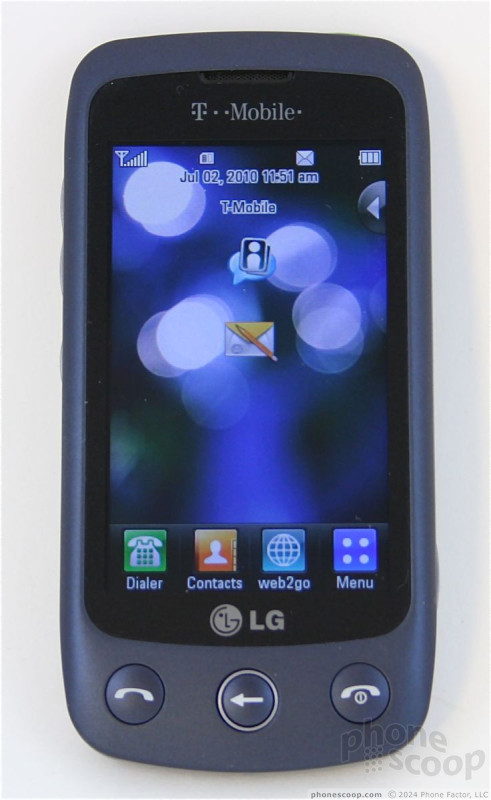







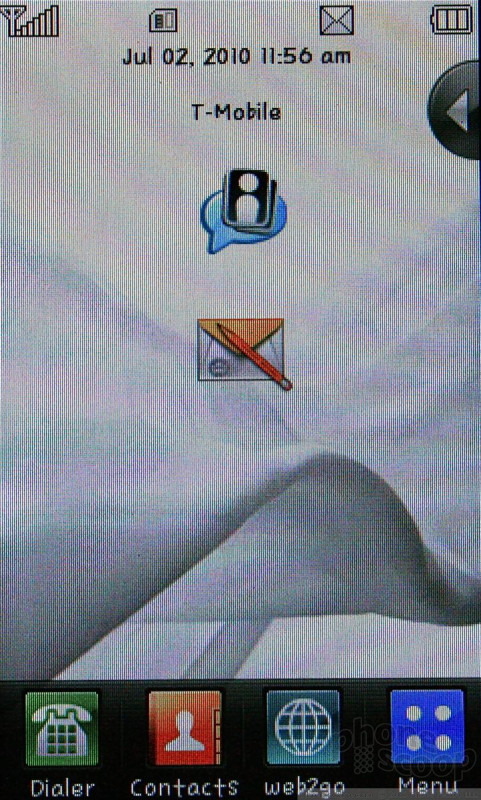
































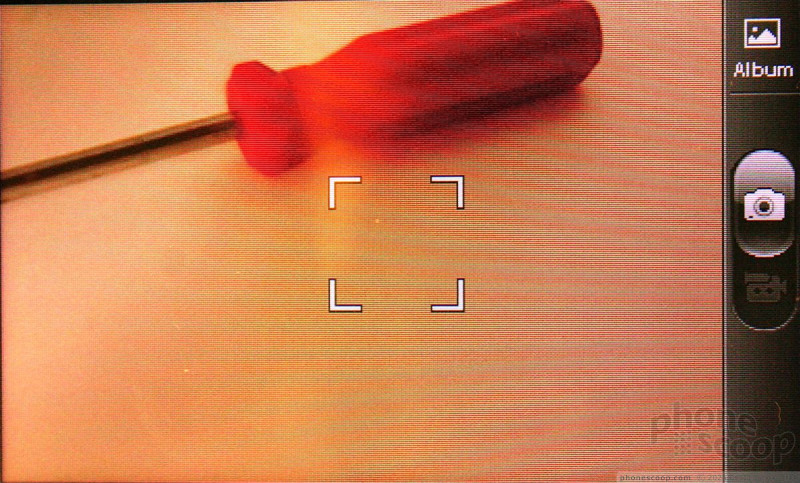



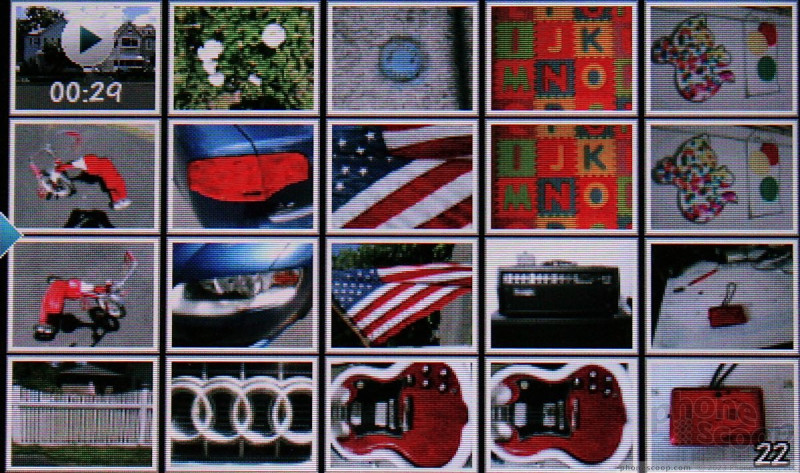






















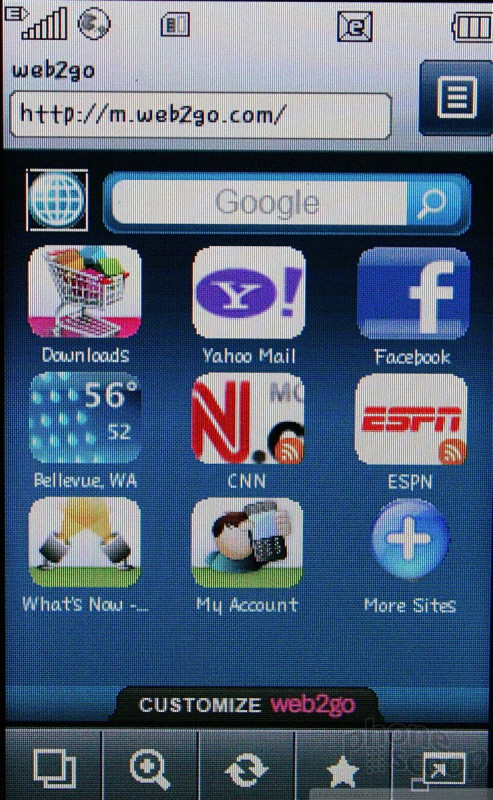





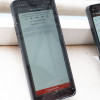 Qualcomm vs. Bullitt: Satellite Connectivity Comparison and Hands On
Qualcomm vs. Bullitt: Satellite Connectivity Comparison and Hands On
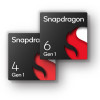 Qualcomm Intros Snapdragon Chips for 2023's Mid-Range & Affordable 5G Phones
Qualcomm Intros Snapdragon Chips for 2023's Mid-Range & Affordable 5G Phones
 Google Brings Calendar App to WearOS
Google Brings Calendar App to WearOS
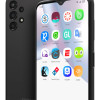 Gabb Expands Lineup with Phone for Teens
Gabb Expands Lineup with Phone for Teens
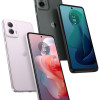 Motorola Brings More Affordable 5G Phones to its 2024 Lineup
Motorola Brings More Affordable 5G Phones to its 2024 Lineup
 LG Sentio GS505
LG Sentio GS505


